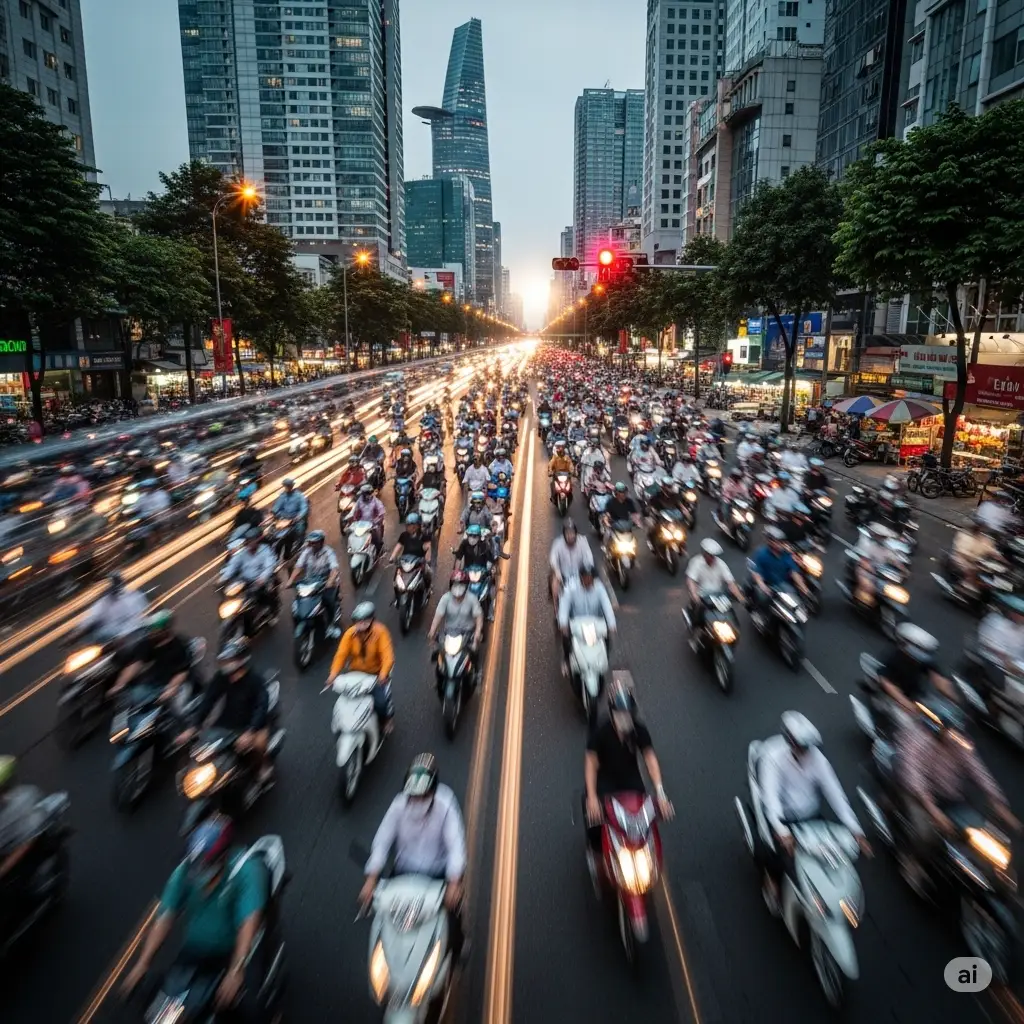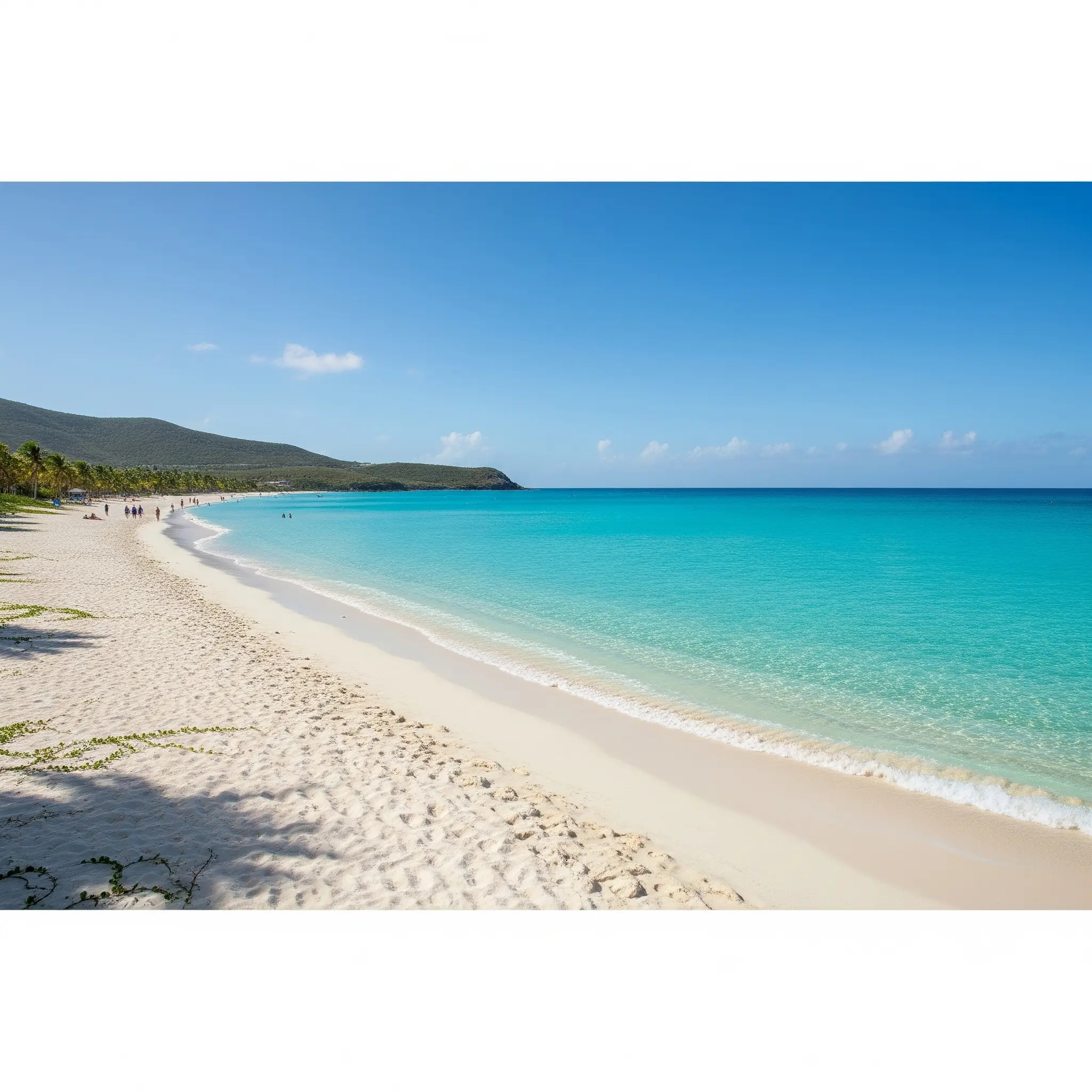Vietnam Transportation in 2025 – The first thing that strikes you in a Vietnamese city isn’t a landmark or a building. It’s the sound, a constant, symphonic hum of engines. It’s the sight—a flowing, mesmerizing river of motorbikes that moves with a chaotic yet strangely beautiful harmony. To a newcomer, this vibrant energy can seem both thrilling and intimidating. Navigating Vietnam is an adventure in itself, an integral part of the travel experience that defines your entire journey.
Choosing how to get around this long, beautiful country is about more than just getting from Point A to Point B. It’s about deciding between speed and scenery, budget and comfort, thrilling independence and guided ease. With rapid modernization, the options in 2025 are more diverse than ever, from brand-new metro lines slicing through ancient cities to the timeless allure of a sleeper train winding through coastal mountains.
This is your ultimate, up-to-date guide to mastering transportation in Vietnam. We’ll break down every option for traveling between cities, conquering urban jungles, and even embarking on the adventure of a lifetime on two wheels. By the end of this guide, you won’t just know how to navigate Vietnam—you’ll be empowered to weave your own unique path through its incredible landscapes.

The Big Picture: Choosing Your Inter-City Travel Style
Vietnam stretches over 1,650 kilometers (1,025 miles) from north to south, meaning long-distance travel is a key part of any itinerary. Your choice will fundamentally shape your experience and budget.
By Air: The Fastest Way to Bridge the Distance
For those short on time, domestic flights are a modern miracle. A two-hour flight can replace a 30+ hour train journey, effectively connecting the northern hub of Hanoi with the southern metropolis of Ho Chi Minh City or the central coast of Da Nang.
- The Key Players (Airlines):
- Vietnam Airlines: The national flag carrier, known for its reliability, full-service experience (including checked baggage), and excellent safety record. It’s generally the most comfortable and premium option.
- VietJet Air: The famous low-cost carrier. Known for its extensive network, frequent sales, and budget-friendly fares. Be prepared for an à la carte experience where you pay extra for seat selection and checked luggage.
- Bamboo Airways: A newer “hybrid” airline aiming to provide a full-service experience at competitive prices. It has gained a strong reputation for quality service and comfortable seating.
- Pros: Unbeatable speed, comfort, and the ability to create non-linear itineraries (e.g., fly from Hanoi to Da Nang, then later from Da Nang to Ho Chi Minh City).
- Cons: Higher cost compared to ground transport, and you completely miss the stunning landscapes and local life that unfold between cities.
- 2025 Pro-Tip: Book your domestic flights at least 3-4 weeks in advance, especially around public holidays like Tet (Lunar New Year), as prices can skyrocket. Use a flight aggregator to compare but consider booking directly on the airline’s website.
By Train: The Scenic Soul of Vietnam
The Reunification Express is not just a mode of transport; it’s a legendary journey. The main north-south line is a ribbon of steel that hugs the coastline, cuts through dense jungles, and passes by vibrant green rice paddies. It’s a slower, more romantic way to travel that allows you to watch the country unfold from your window.
- Understanding the Classes:
- Soft Sleeper: The most comfortable option. These are 4-berth cabins with cushioned beds, a small table, reading lights, and air conditioning. Ideal for overnight journeys.
- Hard Sleeper: Slightly more basic 6-berth cabins. The mattresses are thinner, and there’s less space, but it’s a great way to meet other travelers and save a little money.
- Soft Seat: Comfortable, reclining airline-style seats. Good for daytime journeys of up to 6-8 hours.
- Hard Seat: Wooden benches. Only recommended for the most adventurous budget travelers on very short trips.
- Luxury Tourist Carriages: Several private companies (like Laman Express or Violette Trains) attach their own luxurious, beautifully appointed carriages to the state-run trains, often on popular routes like Hanoi to Lao Cai (for Sapa) or Da Nang to Quy Nhon. They offer a hotel-like experience at a premium price.
- Pros: Breathtaking scenery, a relaxing pace, more comfortable than buses, and a chance to interact with Vietnamese families.
- Cons: Slow (Hanoi to HCMC can take 30-35 hours), and bathrooms can be of varying quality.
- 2025 Booking Tip: Don’t book at the station. Use trusted online platforms like Baolau or 12Go.asia. They have English interfaces, allow you to select your exact seat/berth, and accept international cards. This is the single most important tip for E.E.A.T (Experience, Expertise) as it reflects current best practices.
.png)
By Sleeper Bus: The Backpacker’s Rite of Passage
Sleeper buses are the workhorses of Vietnam’s transport network, connecting almost every city, town, and hamlet. They are incredibly cheap and offer a vast network, making them the go-to choice for budget travelers.
The experience is unique: instead of seats, the buses are fitted with two or three rows of stacked, reclining berths. You’ll be given a plastic bag for your shoes and assigned a bunk. Reputable companies like FUTA (Phuong Trang) Bus Lines and The Sinh Tourist are generally cleaner and more reliable.
- Pros: Extremely affordable, extensive network covering almost everywhere, and a good way to save on a night’s accommodation.
- Cons: Comfort is highly variable (berths are not built for people over 6 feet tall), rides can be bumpy, and drivers can be fast. Rest stops are basic.
- Essential Safety Tip: Always keep your most valuable items (passport, phone, wallet) in a small bag with you in your bunk, not in the luggage hold below. Choose a top bunk for a little more privacy.
By Private Car/Van: Comfort, Control, and a Higher Cost
For families, small groups, or travelers who prioritize comfort and flexibility, hiring a private car with a driver is an excellent option. This allows you to set your own schedule, stop for photos whenever you want, and travel door-to-door without hassle. It’s particularly useful for day trips from a major city or for traveling between nearby destinations like Hue, Da Nang, and Hoi An.
Conquering the Cities: Urban Transportation in 2025
Vietnamese cities are a whirlwind of activity. Luckily, getting around them has become dramatically easier and safer in recent years.
The Rise of Ride-Hailing: Your Digital Lifeline
This is the single biggest game-changer for urban travel in Vietnam. Forget haggling with taxi drivers. Ride-hailing apps provide upfront pricing, GPS tracking for safety, and cashless payment options.
- The Apps to Download:
- Grab: The Southeast Asian giant. Offers cars (GrabCar), motorbikes (GrabBike), and food delivery. This is the most widely available and essential app.
- Gojek: A major competitor, also offering cars (GoCar) and bikes (GoRide). It’s always worth comparing prices between Grab and Gojek.
- Be: A local Vietnamese app that is also very popular and sometimes offers lower prices, especially for bike taxis.
- Why It’s Essential: Using the motorbike taxi option (GrabBike/GoRide) is an iconic, affordable, and incredibly efficient way to zip through congested traffic like a local. It’s an experience in itself.
Innovation in Motion: The New Metro Systems
The “2025” in our guide title is most relevant here. Vietnam’s major cities are finally rolling out modern urban rail systems, set to transform how people move.
- Hanoi’s Urban Railway: The Cat Linh – Ha Dong (Line 2A) is fully operational, offering a clean, air-conditioned escape from the traffic on its route. The Nhon – Hanoi Station (Line 3), the city’s first underground line, is partially operational and expanding, making it easier to connect the city’s western districts with the center.
- Ho Chi Minh City’s Metro: This is the big one. Line 1 (Ben Thanh – Suoi Tien) is slated for full commercial operation by 2025. This will be a revolutionary development, connecting the tourist heart of District 1 with the eastern parts of the city. It will make visiting landmarks and moving between districts faster and more comfortable than ever before.
.png)
The Classics: Taxis and Cyclos
- Taxis: Still a viable option. Stick to reputable, metered companies to avoid scams. Mai Linh (green) and Vinasun (white) are the two most trusted brands nationwide. Always ensure the meter is on.
- Cyclos (Pedicabs): In 2025, a cyclo is a tourist experience, not a practical mode of transport. It’s a lovely, slow way to see the Old Quarter of Hanoi or the streets of Hue. Crucial tip: Agree on the price for the entire ride (not per person) before you get in.
The Ultimate Freedom: Renting a Motorbike in Vietnam
For many, the dream of Vietnam is a road trip on two wheels. It offers unparalleled freedom to explore remote villages, breathtaking mountain passes, and untouched coastlines.
Is It Right for You? A Sobering Reality Check
Before you jump on a bike, be honest with yourself.
- Legality and Licensing: To be fully legal, you need your home country’s motorcycle license and a corresponding International Driving Permit (IDP). Many rental shops won’t ask for it, but in case of an accident, your travel insurance will be void without the proper documents.
- Safety: Vietnamese traffic is unpredictable. This is not the place to learn to ride a motorbike. You should be a confident and experienced rider.
Choosing Your Steed
- Automatic (Scooter): Twist-and-go. Perfect for city driving and shorter trips on paved roads.
- Semi-Automatic (e.g., Honda Wave): The local favorite. You shift gears with your foot but there’s no clutch. Ideal for longer distances and varied terrain.
- Manual (Motorbike): For experienced riders tackling serious mountain routes like the Ha Giang Loop, offering the most control.
Legendary Routes
- The Ha Giang Loop: A 3-4 day epic journey in the far north, considered one of the world’s most spectacular motorbike routes.
- The Hai Van Pass: Made famous by Top Gear, this coastal mountain pass between Da Nang and Hue offers incredible ocean views.
.png)
Conclusion: Weaving Your Own Path Through Vietnam
Navigating Vietnam is a dynamic dance between the traditional and the ultra-modern. In 2025, you have an incredible toolkit at your disposal. You can start your day by booking a sleeper bus on a sophisticated app like Baolau, take a GrabBike through ancient city streets, and then hop on a brand-new, air-conditioned metro train.
There is no single “best” way to get around. The best method is the one that fits your budget, your timeline, and your spirit of adventure. The sleeper train offers romance and scenery, the budget airline offers speed, and the motorbike offers ultimate freedom.
Embrace the journey. Be patient, stay aware, and don’t be afraid to try something new. In Vietnam, how you travel is a destination in itself, and mastering its rhythm is the key to unlocking the heart and soul of this unforgettable country.









